At Shuffled Ink, we love bringing creative visions to life. One of the most fascinating projects we’ve had the privilege to collaborate on is How Much Do You Really Know?® (HMDYRK?), an educational and entertaining FBI-themed card game created by a retired FBI Public Affair Specialist and their business partner. This one-of-a-kind deck offers a captivating glimpse into the world of law enforcement and is now delighting players nationwide.
In this post, we’ll dive into the inspiring story behind HMDYRK?, the creative challenges overcome during its development, and how Shuffled Ink played a part in turning this vision into reality.
A Vision Rooted in Experience
After serving the FBI for 33 years, the creator of HMDYRK? retired with a treasure trove of knowledge and stories. Teaming up with a fellow retired FBI colleague, they saw an opportunity to turn that experience into something both educational and fun: a card game that delves into FBI terminology, historical cases, and pop-culture references.
The idea was born after watching the news in January 2021, when a reporter’s inaccurate statement about the FBI sparked a question: “How much do people really know about the Bureau?” With that, HMDYRK? took shape as a way to educate and engage players while fostering a deeper understanding of law enforcement.
Bringing the Deck to Life: From Concept to Creation
The journey of creating HMDYRK? began humbly with Word templates and printed cutouts, eventually evolving into a professional design process using Adobe Illustrator. The deck’s creators focused on a sleek, simple aesthetic that emphasized content while maintaining an eye-catching design.
When the project reached Shuffled Ink, we immediately resonated with their vision. From selecting the textured linen cards to addressing color-bleed challenges, our collaborative process ensured that every detail met the creator’s high standards.
One of the biggest challenges was maintaining rich, full-bleed colors without ink seepage, which we solved by introducing dark blue borders with upgraded color matching. These tweaks not only resolved technical issues but enhanced the deck’s overall appeal, resulting in a polished, premium product that stands out.
Overcoming Challenges with Passion and Resilience
Like any ambitious project, HMDYRK? faced its share of obstacles, from refining design elements to navigating production delays. However, the creators tackled these challenges with determination, guided by a favorite quote from NBA star Stephen Curry:
“Ninety-nine percent of doing anything in this life is believing that you can.”
Their persistence paid off. Seeing the final sample deck for the first time brought a wave of pride and accomplishment, not just for the creators but for everyone involved in the process.
A Game That Inspires and Educates
HMDYRK? is more than a card game—it’s a testament to the FBI’s rich history and the creators’ desire to educate and inspire. The deck has found a home in FBI field offices, the White House Gift Shop, and the National Law Enforcement Museum, with plans for broader distribution through major retailers like Walmart and Target.
The creators’ proactive approach to marketing—planning ahead, leveraging resources like social media, and building anticipation—has been key to the game’s success. And with its upcoming launch on Amazon, HMDYRK? is set to reach even more players eager to test their FBI knowledge.
Partnering with Shuffled Ink: A Collaborative Journey
When asked why they chose Shuffled Ink, the creators pointed to the exceptional customer service and quality we pride ourselves on. From the initial consultation with Lisa Levin to resolving production challenges, our team worked hand-in-hand with the creators to ensure their vision came to life exactly as imagined.
Their words of gratitude—paired with their excitement over the final product—remind us why we do what we do. Helping creators like the minds behind HMDYRK? bring their ideas to fruition is what makes every project meaningful.
As this deck continues to gain momentum, the creators have big goals for the future. They’re aiming to expand into college campus bookstores, making HMDYRK? a resource for students studying criminal justice, law, and sociology. This aligns with their ultimate mission: to educate and inspire the next generation of law enforcement professionals.
Create Your Vision with Shuffled Ink
The story behind HMDYRK? is proof that with passion, persistence, and the right support, you can turn any idea into reality. At Shuffled Ink, we’re here to help bring your vision to life, just as we did for this remarkable FBI-themed card game.
If you’re ready to create your own custom card deck, whether for games, education, or branding, contact us today. Let’s make something extraordinary together.
Learn more about HMDYRK? at www.hmdyrkcardgame.com and follow them on social media @HMDYRKcardgame.
What’s your vision? Share it with Shuffled Ink, and we’ll help you bring it to life!




 Buyout Bridge was a pack of poker cards with each of the four colors represented by one of our company’s services: Company Sale, Recapitalization, Valuation and Acquisition.
Buyout Bridge was a pack of poker cards with each of the four colors represented by one of our company’s services: Company Sale, Recapitalization, Valuation and Acquisition.









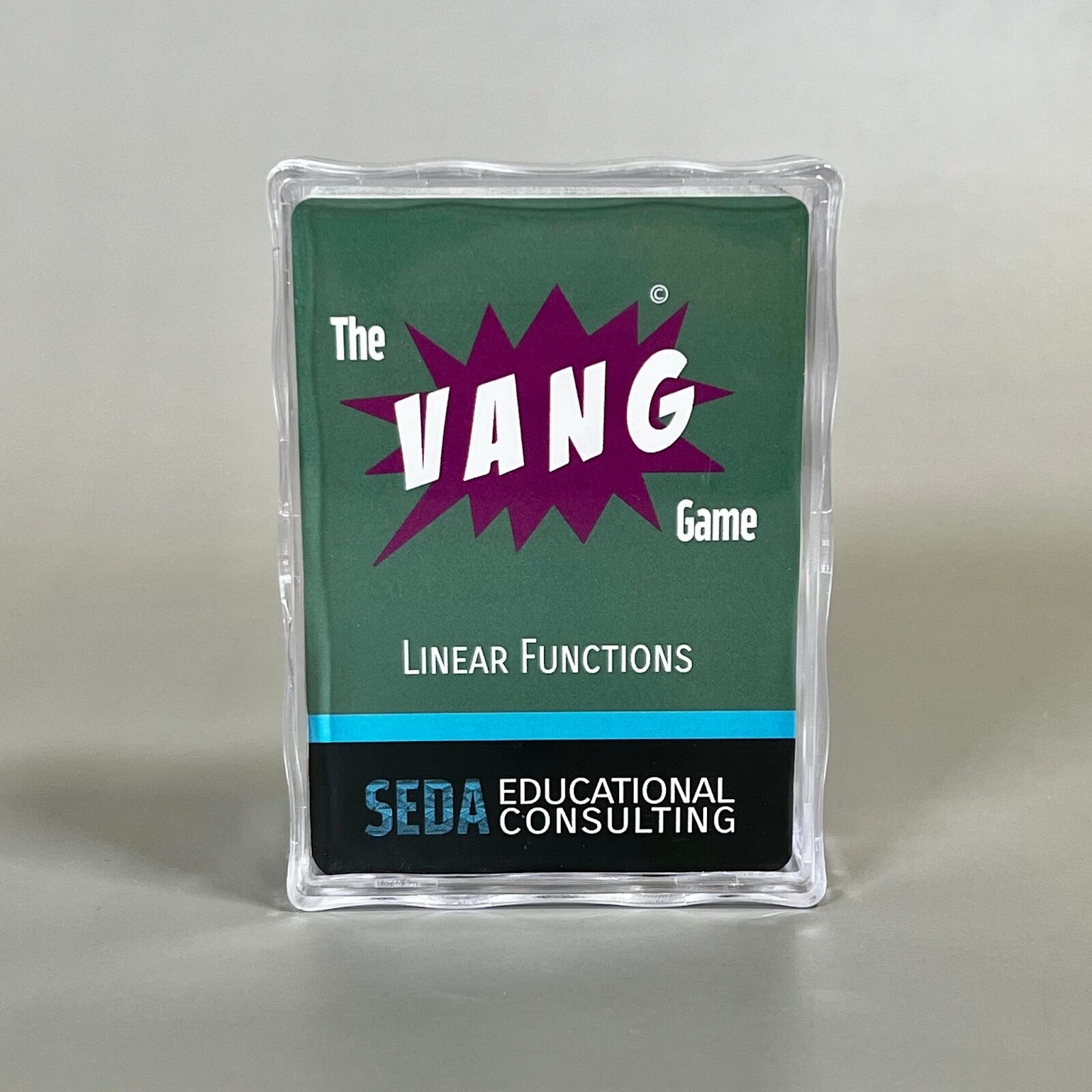





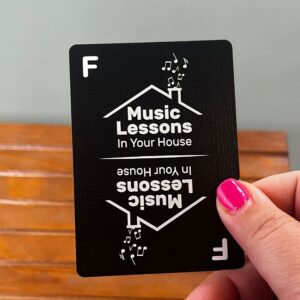
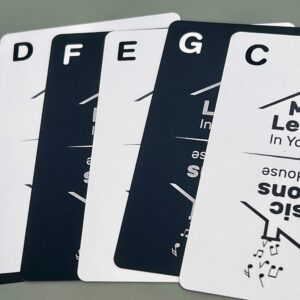
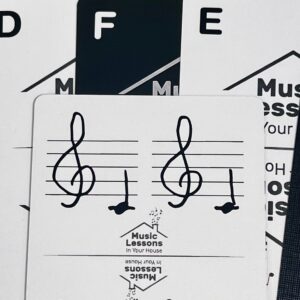
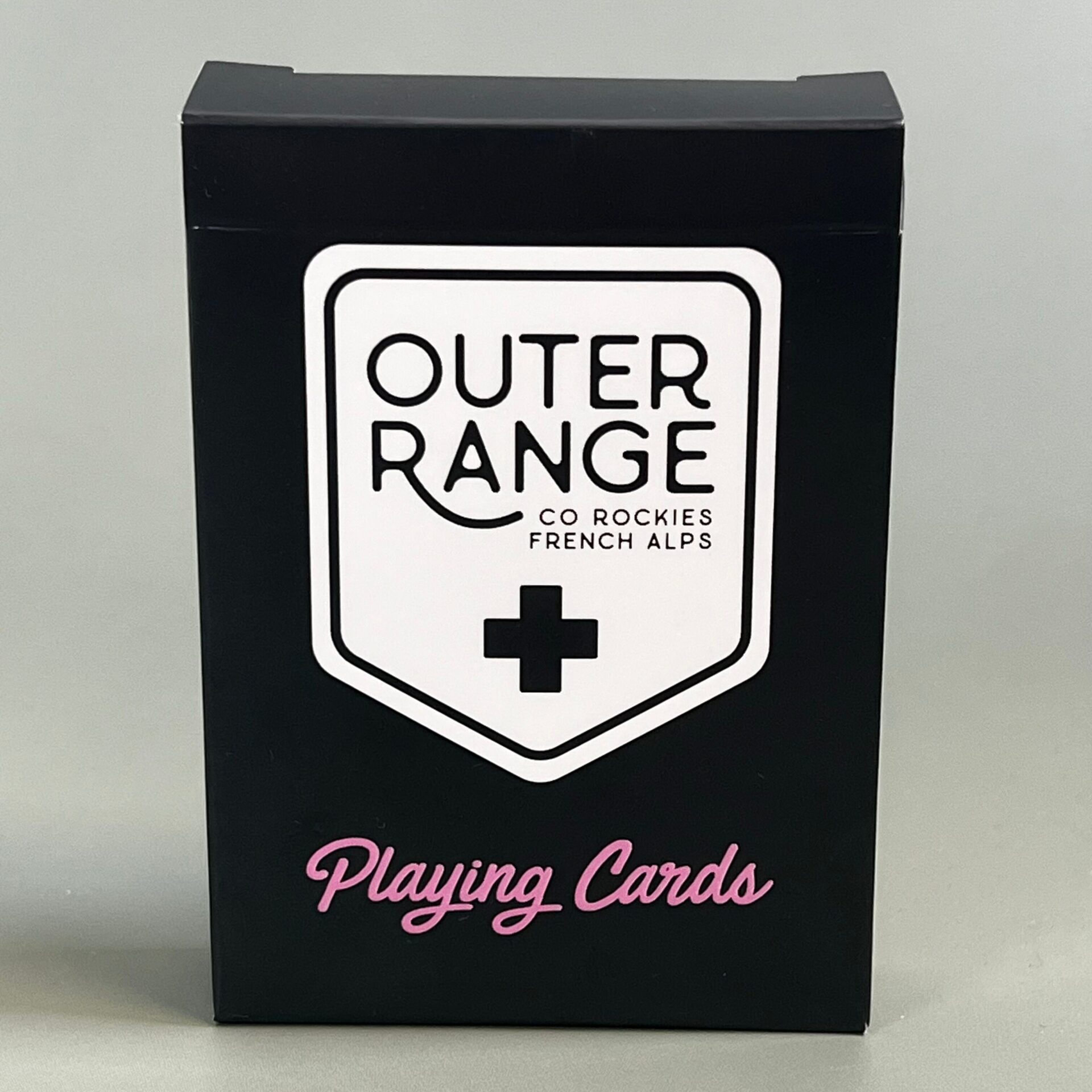

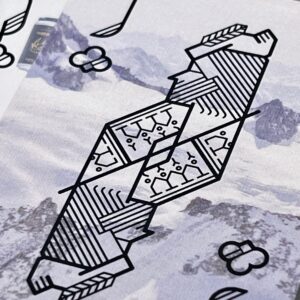
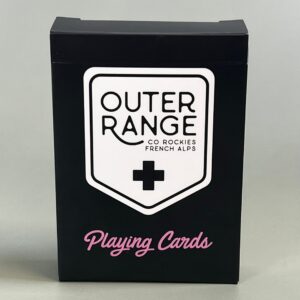

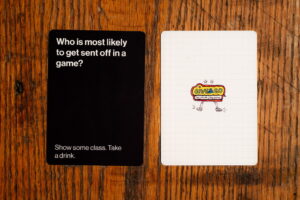

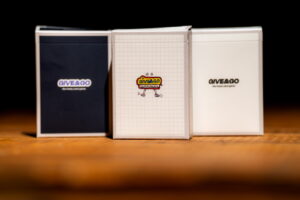

 Some of Kyle Quinn’s prototype homework
Some of Kyle Quinn’s prototype homework Caleb Huff and Kyle Quinn take the prototype for a spin.
Caleb Huff and Kyle Quinn take the prototype for a spin. RustBots artists Glen Brogan and Jesse Lewis
RustBots artists Glen Brogan and Jesse Lewis Caleb Huff and Kyle Quinn contain their excitement
Caleb Huff and Kyle Quinn contain their excitement